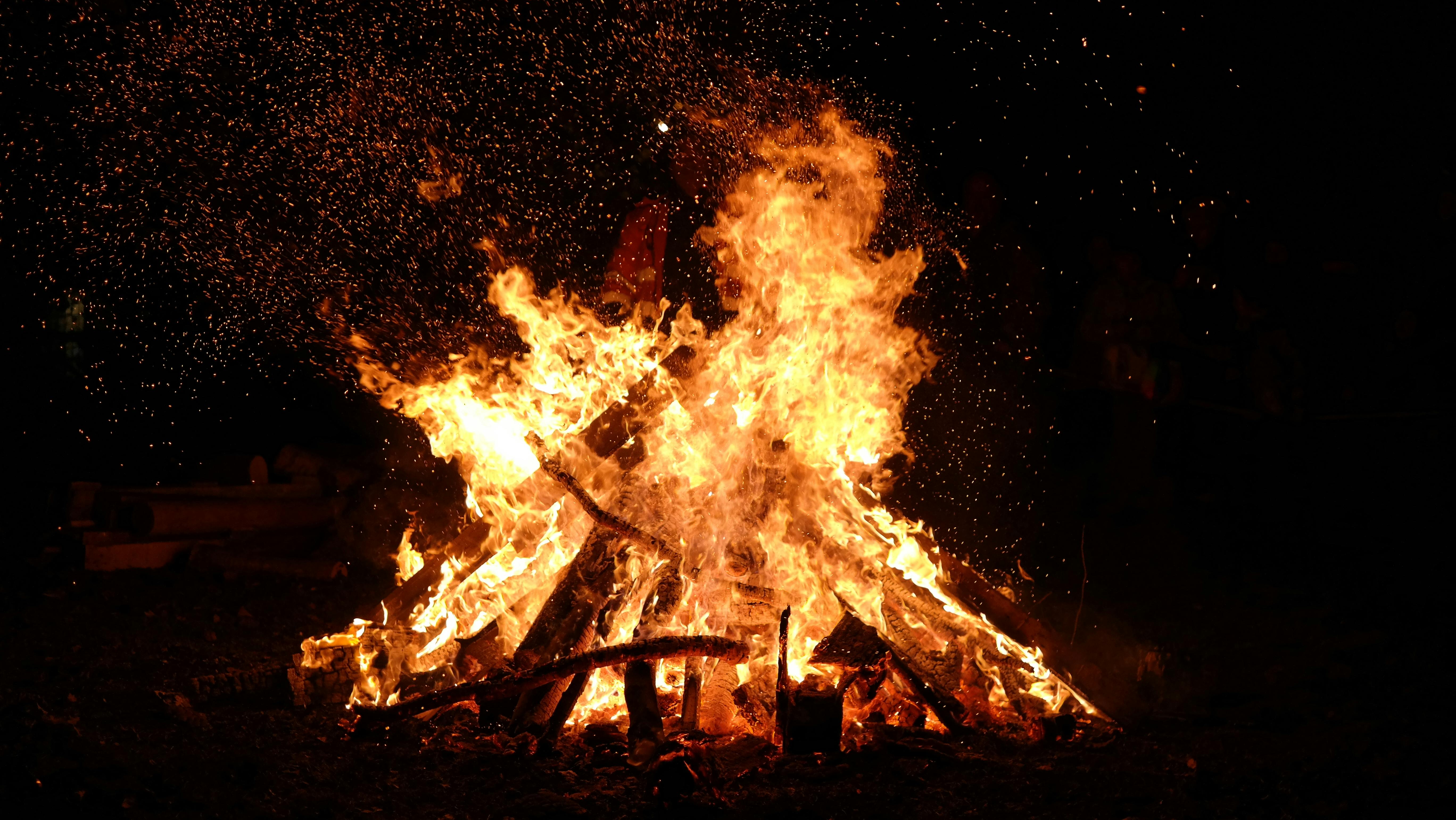
In June of 2022, a specially designed fireproof copy of The Handmaid’s Tale by Margaret Atwood was auctioned for $130,000 USD to support PEN America’s efforts to fight book bans. A delightfully over-the-top promotional video shows Atwood blasting the book with a flamethrower, from which it emerges unscathed. While constructing all future books out of heat-resistant aluminum and space-age steel wouldn’t actually solve any problems, the fireproof book is an act of defiance against that recurring symbol of fear and anti-intellectualism, the bonfire. It announces that the written word can always adapt to outlast the forces that would try and destroy it.
Looking to history supports this claim. Despite sustaining irrecoverable losses over the millennia, literature has survived, and while fireproof editions may be the latest innovation in this long conflict, past societies made many innovations of their own. Let’s take a look at some ways in which texts of the past have been saved from the flames.
In the ancient world, a library itself can be considered a remarkable feat of the imagination. A prospect first available only to royalty, the gathering together of texts for their protection and study has remained a cornerstone of the literary world. The library of Ashurbanipal, king of the Assyrian Empire in the 7th century BCE, has been called by H. G. Wells "the most precious source of historical material in the world," and contained within its collection the legendary Epic of Gilgamesh. Ashurbanipal, a lover of literature, collected tablets from across his empire for preservation in his great library. Unfortunately, he was also a cruel and iron-fisted military leader of an empire hungry for growth. He used his empire’s expansion as a means to expand his collection, taking for his own the recorded knowledge of his vassal states until they eventually stage a rebellion, setting fire to the library in 612 BCE. Ironically, the heat of the fire baked the clay tablets stored inside, allowing them to be preserved for our viewing today. However, the wax boards, leather scrolls, papyrus, and other texts were destroyed. The knowledge of the library, conscripted by those in power, was forever lost to those to whom it belonged.
With the advent of the Protestant Reformation in the 16th century, book burning in Europe reached a fevered height. Martin Luther and the Catholic Church both used book burning as a political tool to alter public opinion. The efficacy of the printing press made complete eradication of controversial texts almost impossible, but both sides sought to utilize public book burnings to convey the ideological incompatibility between the old and the new. Rather than to institutions of church or state, it fell to private citizens, wealthy antiquarians, to preserve the endangered writings of the time. Even a single manuscript tucked away on a shelf can carry its knowledge to the future, its messages alive and well. Sir Robert Cotton makes a perfect example, possessing a rare book collection which surpassed that of the crown. His collection included the original bound manuscript of Beowulf and a fifth-century copy of the Greek Bible, among other treasures. As a secular private library, Cotton’s collection was safe from the shifting political tides of religious allegiance, allowing its contents to survive even today.
Perhaps the most infamous book burners in history, the Nazis waged a ceaseless war against any text which did not reflect their particular worldview. No library, institutional or private, was outside their reach, and the materials held at the Yiddish Scientific Institute was a particular target. Conscripted Jewish workers, nicknamed the Paper Brigade, began smuggling away books and other items from the Institute, secreting them away throughout the ghetto or passing them along to trustworthy outsiders. Two of the Brigade’s leaders, Abraham Sutzkever and Shmerke Kaczerginski, managed to eventually escape imprisonment, but the majority of the members were murdered. However, the group succeeded in saving between 30 and 40 percent of the irreplaceable Institute collection, what is now the largest collection of material about Jewish life in Eastern Europe in existence. Against the overwhelming political and martial force of the Nazis, the humble potato sack became a safer place for valuable books than even a respected research institute.
These anecdotes all demonstrate the clear value of the individual in preserving knowledge. Books have been burned by invading armies and established social institutions alike, but there are always those who can see past the short-term manipulation tactics and into the future. Whether you are a king, prisoner, or anything in between, your efforts could save a work of art or scholarship from destruction. Keep the works you value close. While systemic values may change, the preservation of knowledge by the individual ultimately benefits all.
For more on the topic, check out Richard Ovenden's Burning the Books: A History of the Deliberate Destruction of Knowledge

